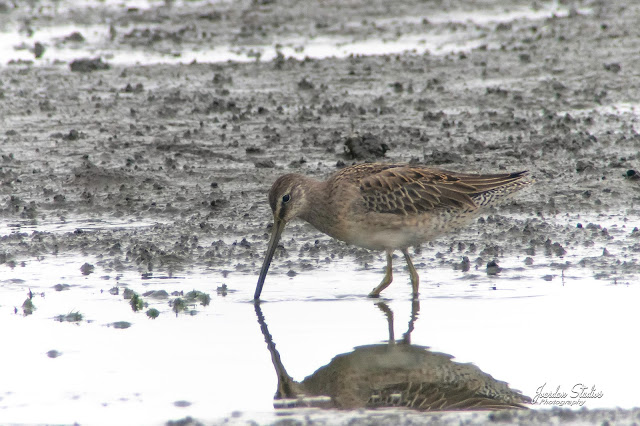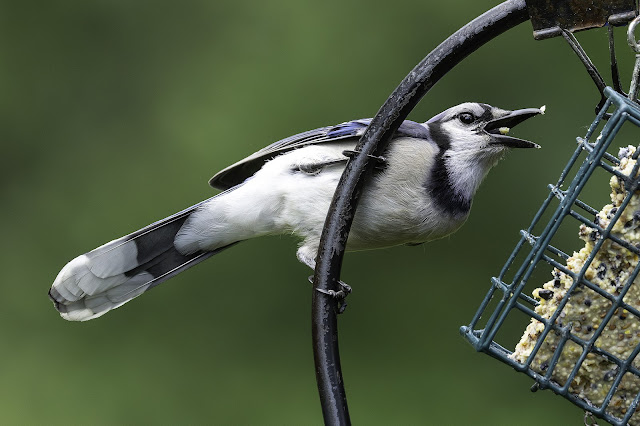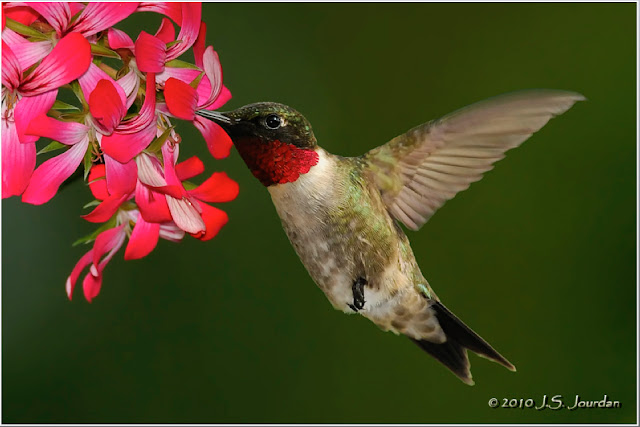Fall Dowitcher Identification - 03 Oct 2021
While photographing the Buff-breasted Sandpiper at Union Camp Marsh in the SE corner of Sterling State Park, Monroe Co., MI I noticed several dowitchers nearby. Given the date (03 October 2021) I suspected Long-billed Dowitchers (Limnodromus scolopaceus), but these birds did not seem to match "my" description for Long-billed Dowitcher: all-gray or actively molting dowitchers on steroids.
As more dowitchers flew in I noticed they all appeared to be juveniles, and given their overall brownish coloration, extensive spotting on flanks and undertail coverts, and relatively slim appearance I then suspected Short-billed Dowitcher (L.griseus hendersoni) with worn juvenile plumage that would eventually be molted when they reach their wintering grounds on the coast. I decided to do a bit of research and see what I could learn about identifying late fall dowitchers.
Differences in migration timing can help sort SBDO from LBDO. Adult SBDO usually arrive mid-late July with juveniles arriving a month later. Adult LBDO arrive in this region around mid-August and stay well into late September/early October after most all SBDO have left.
Short-billed Dowitchers typically don't molt until they are on their wintering grounds on the Atlantic or Pacific coasts while Long-billed Dowitchers are known to molt during migration. Pt. Mouillee SGA, Metzger Marsh and Ottawa NWR are known staging grounds for adult birds actively molting in August-September (Winger, 2003). Our own Caleb Putnam (2005) provides a great writeup discussing molt in the Long-billed Dowitchers. Whan (2003) also has a nice writeup discussing dowitcher ID in Ohio. A general rule of thumb is that after September any dowitchers inland (away from the coasts) should be Long-billed Dowitcher. Winger also noted that birds still in alternate plumage seen in October in these areas could be either species, but sightings are rare.
I checked eBird for southeast Michigan and northwest Ohio and found that Short-billed Dowitchers have been reported in October but are outnumbered ~3 : 1 in frequency. So it got me thinking about whether the identifications are accurate, or like me, mistakenly given based on the scheme I mentioned at the top.
So it got me thinking about whether the identifications are accurate, or like me, mistakenly given based on the scheme I mentioned at the top. For example, the first bird I digiscoped appeared to be a juvenile Short-billed Dowitcher w/ fresh plumage that includes extensive spotting, buffy breast and a slim appearance, especially compared to the bird on the right that appears to be molting. But a closer look showed plain tertials and plain secondary coverts (explained in more detail below) that are consistent with a juvenile Long-billed Dowitcher. As it will turn out all the birds I saw this day will be Long-billed Dowitchers based on some very important ID characteristics I learned when I was today years old...
I started searching Google for "dowitcher ID in the fall" and found the Winger and Putnam references. Melissa Hafting at Dare To Bird has a nice blog post describing their differences. More importantly, I found a YouTube presentation given by Jon L. Dunn, one the most respected authorities when it comes to shorebird ID. Not only does he discuss the taxonomic history of the Limnodromus spp. but he shows which characteristics are most important for identifying the 3 Short-billed Dowitcher species (L.g. caurinus, L.g.griseus, and L.g. hendersoni) and Long-billed Dowitcher (L. scolopaceus). And, as it turns out, I've been doing it all wrong by concentrating on shape, spotting and barring when I should be concentrating on tertials, secondary coverts and tail for birds on the ground, and concentrating on underwing patterns for birds in flight. Incidentally, he is NOT a fan of GISS (general impression of shape and size) when it comes to dowitchers and discourages any attempts to ID birds based on shape.
Dowitchers on the ground
For birds on the ground it is important to understand what feathers you need to look at to properly ID dowitchers. I grabbed a screen capture from one of his slides that is a great reference. Dunn says the key to identifying dowitchers lie in their tertials (the long sabre-looking feathers that can be mistaken for primaries), and secondary coverts and scapular feathers:
 |
| https://www.youtube.com/watch?v=l1Z6LyidMKw |
For Short-billed Dowitchers he emphasized looking for an "inner loop" or "tiger stripes" on the tertials or inner greater secondary coverts:
 |
https://www.youtube.com/watch?v=l1Z6LyidMKw |
For the juvenile Long-billed Dowitchers from today examination of the tertials and secondaries reveal plain, unmarked feathers with no evidence of internal loops or tiger stripes:
Dowitchers in flight
For birds in flight the key to separating Short-billed and Long-billed Dowitchers is to look at the underwing patterns, concentrating on the "underwing patch" that is diagnostic of Long-billed Dowitchers. Subalpine Birding has an excellent blog post that describes this in detail.
 |
| https://subalpinebirding.com/blog/strongunderwing-pattern-in-dowitchersstrong |
The key is to look for the "white patch" or "headlight" at the base of the forewing of Long-billed Dowitchers that can be seen with binoculars. The axillary feathers showing strong barring on Short-billed Dowitchers will be sparse on Long-billed Dowitchers and is best seen in flight photographs. For example, check out the dowitchers (ignore the Stilt Sandpipers) in flight this morning at Union Camp Marsh (03 Oct 2021):
All of the dowitchers in the image show the white patch at the base of the forewing, sparse barring of the axillary feathers, and thin spotting along the leading edge of the forewing, therefore can be identified as Long-billed Dowitchers.
Now compare with the Short-billed Dowitcher in flight from August. First, a juvenile:
and an adult in worn breeding plumage:
The white patch is missing and the axillary feathers show stronger barring.
Caution is advised that this should not be used as an exclusive field mark since variations in feather wear may give the impression in Short-billed Dowitchers. Johnson (2016) advises using a combination of "birding by impression" and "feather birding" to identify birds and uses LBDO in flight as an example.
Finally, if you can examine the tails of the two dowitchers you can see that Long-billed Dowitchers have black tail bands that are thicker than the white bands while Short-billed Dowitchers have equally-thick black and white bands (some references indicate white band is thicker than the black band but I don't see it).From this morning:
A word of caution: depending on how the tail is angled can give the impression that white bands are as thick as the black bands.
Now compare with the tail of the Short-billed Dowitchers from August:
Tail edges can be seen with a scope when birds are on the ground and can be a quick way to confirm Long-billed Dowitcher where it appears mostly black. Can you spot the difference?
Sound
Call is also diagnostic. While the song of both SBDO and LBDO are remarkably similar their flight calls are distinctively different. Short-billed Dowitcher call is a wet "du-du-du" while the Long-billed Dowitcher call is a louder "keek-keek".
So, armed with this information I feel a whole lot more confident about identifying dull or worn dowitchers during the fall migration.
I wish to give a shout out to Jon L. Dunn for his most excellent YouTube presentation and to Guillermo Rodriguez Lazaro at SubAlpine Birding for his excellent article about dowitchers in flight.
I think after this I should quit attempting to ID birds and stick to identifying tennis balls. I'm great at identifying tennis balls...
References:
Variation in Winter Dowitchers, Hannah Floyd and Peter Pyle, Birding Magazine, January 2021, pp. 48-54.
Crossing the Bridge Over the Gestalt-Field Mark Chasm, Tom Johnson, Birding Magazine, October 2016, pp. 52-54.
Sterling SP--Union Camp Marsh, Monroe, Michigan, US
Oct 3, 2021 10:00 AM - 10:15 AM
Protocol: Stationary
1 species
Long-billed Dowitcher (Limnodromus scolopaceus) 8 Juveniles, foraging and in flight over mudflats near shore. Diagnostic "headlights" seen (white axillary feathers next to arm pits not seen in SBDO. I wrote an article describing fall dowitcher identification at: https://birdingthroughglass.bl
View this checklist online at https://ebird.org/checklist/S1
This report was generated automatically by eBird v3 (https://ebird.org/home)































Comments
Post a Comment
Please leave a comment. I will try to respond ASAP.